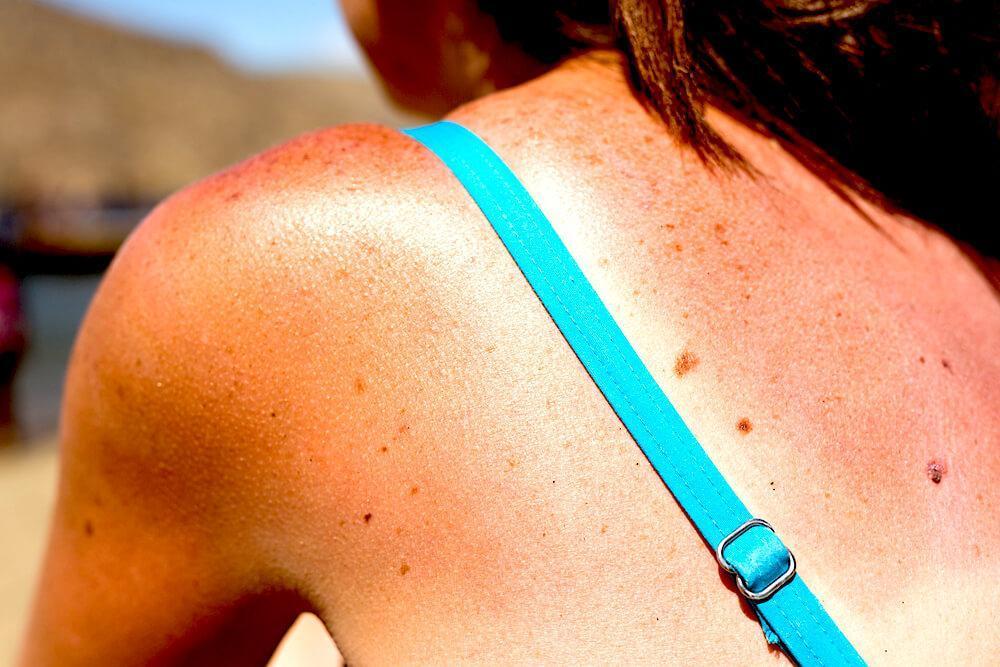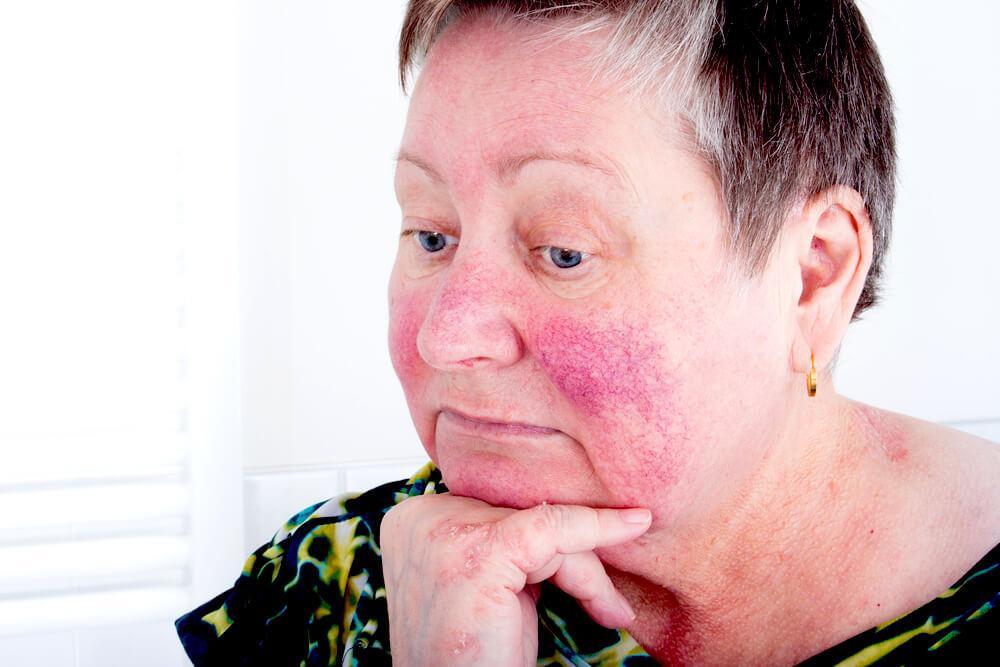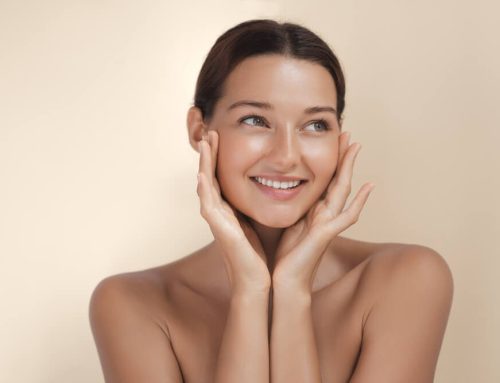We all want to have healthy, glowing skin, right?
That’s why we spend all that time researching ingredients, looking up hottest new products on the market and building elaborate skin care routines.
And yet…
Sometimes our skin acts up in ways we can’t seem to control.
Whether it’s skin troubles you’ve been battling for years or a nasty surprise that shows up overnight, these problems can be a pain to tackle.
Even worse, they can make you feel incredibly self-conscious about your appearance.
Still, you shouldn’t despair – the good news is that even the most stubborn skin care crises can be solved if you know exactly how to treat them and practice patience until you notice improvements.
Acne
By far the most widespread skin issue, acne can be a real hassle. Even though this dermatological nightmare is usually associated with adolescence, acne does not discriminate – it can affect people regardless of their age, sex or skin type.
What’s more, acne can be wildly unpredictable because it’s triggered by many different factors, including:
- Hormones
- Stress
- Certain types of medication
- Genetics
- Menstrual cycle
So, what is the solution to curing acne?
There is no straightforward answer, unfortunately. One thing to do before proceeding with any treatments is figuring out what kind of acne you’ll be dealing with, as therapy largely depends on the severity of the problem.
Based on how serious your condition is, acne can be:
- Mild
- Moderate
- Severe
In order to determine exactly what type of acne you’re suffering from, it’s best to consult your dermatologist.
Mild acne is usually treated with topical medication, such as salicylic acid or retinoids, solutions which are designed to penetrate deep into your skin and dissolve all the pollutants and excessive oils that are clogging up your pores.
In case of severe acne, your doctor may prescribe oral antibiotics. Among the most common ones are tetracycline, minocycline and doxycycline.
There is one more thing.
Persistence is key in treating acne. Once you’ve found a solution that works for your skin, make sure to stick to it and the results will certainly become visible with time.
Sunburn
Some people love sunbathing, which is no wonder – a little bit of tan can make your skin look radiant and give it a golden glow.
But a couple of extra minutes in the scorching sun is all it takes to go from bronzed goddess to burnt lobster.
Not only is sunburn visually unappealing and slightly embarrassing, it can also be incredibly painful, especially if it has affected large areas of your body.
To makes things worse, sometimes it can take days and even weeks for your skin to revert to its normal, painless state.
So, what are some things you can do to make sure you don’t end up looking like a beetroot after a day in the sun?
Well, for one, you should think about prevention. Having a good sunscreen will not only shield your skin from the sun, it will also reduce signs of premature aging and protect your skin from harmful UV rays.
However, making sure you’re armed with sunscreen is only half of the battle. You also have to ensure that you are maximizing on its benefits through proper use.
Here are some pointers to help you figure out how to use your sunscreen correctly:
- Choose a water-resistant formula with SPF of at least 30
- Apply it at least 15 minutes before exposing yourself to direct sunlight
- Use a palm-sized amount on bare skin
- Reapply often, every two hours
However, if the damage is already done and now you’re left wondering how to relieve all that redness and irritation, go for products that contain aloe vera, as this nature-derived ingredient can help reduce inflammation and soothe the skin.
If you don’t have any aloe vera at hand, you can always go for the DIY remedies, which include:
- Cool milk or yogurt
- Cucumber
- Vitamin E
- Teabags soaked in cold water
And when you reach that dreaded stage when the pain is mostly gone but your skin starts peeling, make sure you treat it with products rich in moisture. Look for moisturizers enriched with ingredients such as jojoba, honey or coconut oil.
Blackheads
Do you happen to have oily skin?
If you do, chances are you know how incredibly annoying blackheads can be.
These little bumps are caused by clogged up hair follicles and generally tend to appear on the nose, forehead and chin.
Not only do blackheads look a little nasty, they are also seemingly impossible to get rid off.
And even though you might be tempted to just squeeze them all out, popping them can only aggravate the problem, as fingers or extraction tools can rip the pores and spread bacteria, causing even more breakouts.
What can be done to make these little bumps of grease go away?
The solution lies in thorough, effective skin care routine that will gradually, but effectively reduce the appearance of blackheads.
A good strategy for achieving blackhead-free skin should include:
- Making sure you always remove your makeup
- Switching to skin care products that contain salicylic acid
- Gentle, but regular exfoliation
- Occasional deep cleansing with clay masks
- Using non-comedogenic moisturizers
Sticking to a dedicated skin care regimen might not give you that instant satisfaction that squeezing does, but it will definitely work out better in the long run!
Hyperpigmentation
Hyperpigmentation occurs due to overproduction of melanin, which causes certain areas to become darker compared to the rest of the skin.
Hyperpigmentation can have many causes; the most common ones are:
- Sun exposure
- Hormonal changes
- Certain medications
- Vitamin deficiency
- Trauma to the skin (like acne or bug bite)
Even though it’s essentially harmless, hyperpigmentation can be distressful for aesthetic reasons, since this condition makes your skin tone look dull and uneven.
If you care about preserving a well-balanced complexion, it’s important to prevent the symptoms of hyperpigmentation from becoming even more pronounced.
This can be done by regularly applying sunscreen – and not just during summer or on days you plan on spending outdoors.
You should also make a point of not picking at your skin and squeezing out spots, as any kind of skin irritation will only bring out the pigment.
There are also ways to treat already existing hyperpigmentation.
In order to diminish the appearance of dark spots, it is crucial to incorporate skin care products that are potent in removing dead skin cells and promoting skin renewal into your everyday routine.
What are those?
Well, when it comes to exfoliation, your best bet is to switch to products that contain AHAs (alpha hydroxy acid) or BHAs (beta hydroxy acid).
According to studies, acid-based exfoliators are successful in gradually breaking down dead cells and unraveling the healthy layer of skin hiding underneath.
Another powerful weapon in battling dark spots and scarring is Vitamin C, whose antioxidant properties can improve your skin’s radiance and prevent further hyperpigmentation.
Flaky Skin
Rough, flaky skin is our number one enemy during winter months, although people with dry skin are no strangers to this problem regardless of the season.
Aside from cold weather, there are various external factors that can contribute to your skin feeling parched.
These may include lack of moisture in the air, indoor heating, pressurized air (like in airplanes), etc.
Moreover, it could be your very own day-to-day habits that are exacerbating your skin issues.
For example, harsh cleaners, soaps or toners that contain alcohol are a big no-no for people with dry skin. Just like taking showers or baths with super-hot water or not drinking enough liquids throughout the day.
The first step towards achieving plump, hydrated skin is ditching these bad habits. For example, try to drink at least 8 glasses of water per day, throw away any alcohol-infused skin care products and install a humidifier in your apartment or office.
Now, if you want to replenish your skin’s hydration levels, you should commit to a dedicated, moisture-charged beauty regimen.
This can include layering several moisturizing products on top of each other, a practice popularized through Korean beauty trends.
To achieve maximum effect, make sure you are layering your products by their consistency, from thinnest to thickest, like so:
- Toner
- Essence
- Serum
- Eye cream
- Moisturizer/Night cream
Also, make sure to apply the product as soon as you step out of the shower.
This way, you can rest assured that the moisture will be locked in your skin cells.
And if you want to keep your face hydrated throughout the day, invest in a refreshing face mist that you can slip into your bag and use whenever you feel your skin needs an extra boost of moisture.
Rosacea
Rosacea is an inflammatory skin condition that affects a whopping 45 million people around the globe.
Most common symptoms of rosacea include redness on the central part of the face, around the nose and cheek area, as well as broken blood vessels, itchiness, swelling and red, acne-like bumps.
Even though the primary cause of rosacea is still not determined, there are some common triggers which can worsen the condition. These include:
- Spicy food
- Stress
- Smoking
- Heat
- Alcohol
Rosacea cannot be prevented and is ultimately incurable. The symptoms also get worse with age (especially in 30s and 40s), especially when the condition is untreated.
The good news is that you can still take measures to keep outbursts of rosacea at bay.
Before anything, you should try to identify all the factors that make your skin flare up and do your best to avoid them.
For example, sticking to mild food, cutting down on alcohol, caffeine and cigarettes may greatly improve the way your rosacea manifests itself.
Moreover, you can tweak your everyday beauty routine to make sure the products you’re using aren’t making your condition worse.
Avoiding formulas that contain alcohol is a must, but you should also steer clear of harsh cleansers and exfoliants, as they can only irritate the skin and exacerbate redness and inflammation.
Finally, it’s imperative that you use sunscreen on the regular, since the sun is one of the major culprits for causing rosacea flare-ups.
Ingrown Hair
As if hair removal wasn’t a tedious process to begin with, the phenomenon of ingrown hair can turn it into an even bigger hassle for many people.
Why do ingrown hairs form in the first place?
Well, to put in in simple terms, your hair has to grow back once you remove it. In most cases, this process happens without any problems.
However, when a hair is prevented from growing upwards, it will curl and grow back into the skin.
And your skin will react by trying to push it out. This is when you may notice symptoms such as:
- Bumps
- Redness
- Inflammation
- Dark spots
So, what is to be done about this pesky skin problem?
A couple of preventive measures can help you reduce the occurrence of ingrown hairs the next time you shave or wax.
The first one is to exfoliate your skin before hair removal. You can do this with a scrub or a washcloth.
This step will help remove dead skin cells blocking your pores and promote upward hair growth.
The second one is to keep your skin hydrated, which is why you should slather it with moisturizer a couple of days in advance before your scheduled hair removal appointment.
However, if you are already experiencing bumps, dark spots or irritation caused by ingrown hair, the most important thing is to restrain yourself from picking at your skin and physically extracting the hairs. This can only exacerbate the problem and cause infection or scarring, which will be even more difficult to get rid off.
Try instead these home remedies that can help push out the hair naturally and soothe irritation:
- Gentle scrub of the affected area to help hair exit the skin
- Applying tea tree oil to kill bacteria and reduce inflammation
- Use products with aloe vera to soothe irritated skin
Hopefully, this advice will help you next time you encounter a beauty nightmare. Just remember, with the right treatment and a little bit of patience, you can overcome almost any skin care emergency.








Leave A Comment